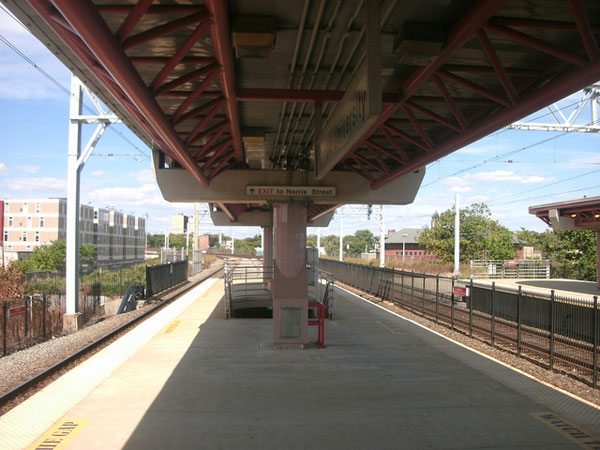
April 17, 2018; Curbed
In Philadelphia, the Community Justice Land Trust is helping preserve a community in the face of rising land values and speculation in the city’s Eastern North section, near Temple University, reports Patrick Sisson in Curbed.
Sisson notes that a decade ago, the area, “near Temple University and largely lower income and [Latinx], was beginning to feel the influence of nearby developments, loft-to-condo conversions that had been a harbinger of rising rents and displacement in similar neighborhoods.” The formation of a community land trust has helped provide long-term permanently affordable housing for residents while also allowing for long-term community planning of development.
As NPQ has noted, as land prices in urban neighborhoods rise, communities are increasingly turning to land trusts as a mechanism to preserve housing affordability. Cities that have moved to support community land trusts in the past two years include D.C., Pittsburgh, Baltimore, New York City, and Buffalo, among others.
The Philadelphia effort is older. In 2006, a group of area nonprofits, churches, and unions came together to form the Eastern North Philadelphia Coalition. Three years later, after interviewing more than 300 neighborhood residents, the group completed a 119-page community plan. Among the resident recommendations was assessing the “feasibility of creating a Community Land Trust (CLT) to ensure permanent stewardship of land and the permanent affordability of housing and other buildings.” A year later, the Community Justice Land Trust was incorporated based on the results of that feasibility analysis.
The idea behind a community land trust is that a nonprofit group owns the land and then leases the land to people who buy the buildings on the land. For residential buyers, their rights as property owners are similar to a fee-simple home, but with the proviso that, in exchange for buying in at a below-market price, they must sell the house to a future owner at a below-market price. Residents still earn a profit, but a reduced one; the benefits, however, are greater affordability and greater community control over land, protecting residents from displacement.
Sign up for our free newsletters
Subscribe to NPQ's newsletters to have our top stories delivered directly to your inbox.
By signing up, you agree to our privacy policy and terms of use, and to receive messages from NPQ and our partners.
“When you look at how homes appreciate over time and what markets do over time, we started to ask ourselves, ‘How do you take out the cost of land?’” says Christi Clark, who serves as organizing director of the Women’s Community Revitalization Project, the nonprofit that operates the community land trust, guided by a community-based advisory committee.
Currently, there are 36 affordable rent-to-own units on trust-held land, with 75 more in the pipeline. The community vision is broad and includes both residential and commercial development on trust land. “With the community having control of the land, and preserving affordability, that helps future generations stay in an area they call home,” Clark explains.
Sisson points out that US community land trusts trace their roots to the civil rights movement. As Sisson explains, “Activist Robert Swann, along with Slater King, a cousin of Martin Luther King, helped establish the community land grant concept, and launched it in 1969 with New Communities, a 5,700-acre farm and land trust in southwest Georgia collectively owned by roughly a dozen African-American families.” Sisson adds that Swann and King built on earlier models, such as those of Ebenezer Howard and the Garden City movement in Great Britain, Israeli kibbutzim, and the Gramdan Villages movement in India.
One obvious advantage of having the community own the land is permanent control. By contrast, other forms of affordable housing often revert back to market-rate pricing after 30 to 40 years. Community land trusts, Sisson adds, “can be especially useful tools to help people of color and low-income workers achieve homeownership.” Sisson notes that the Grounded Solutions Network, a national advocacy nonprofit, found that since the mid-1970s “only one of every two low-income homeowners of color in the US has been able to keep a home they purchase for more than five years. As it normally takes roughly 10 years of ownership to truly realize the value of buying instead of renting, many lose value instead of creating wealth.” By contrast, in a community land trust, 93 percent of homeowners maintain ownership for more than five years.
The Philadelphia land trust has also pushed for the expansion of community land trusts beyond the city. Two years ago, it helped foster the creation of the Pennsylvania Community Land Trust collaborative. The collaborative serves as a support network for 10 community land trusts statewide, as well as acting as an advocate for supportive policy at the state and local level.—Steve Dubb












